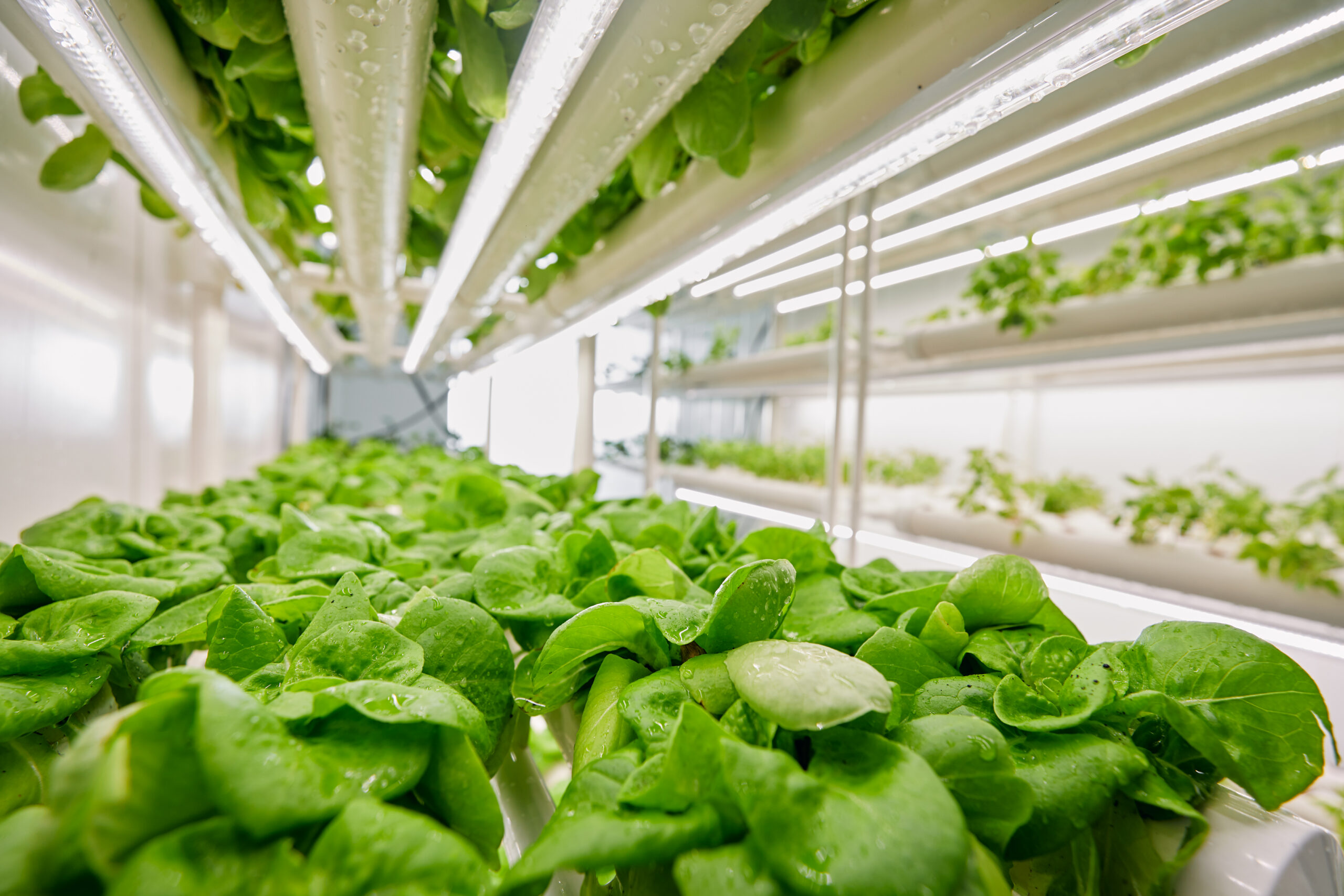Vertical farming, as the name suggests, involves growing crops in stacked layers, typically in a controlled indoor environment. This innovative method of growing has been utilised as a solution to the challenges of traditional agriculture which comes alongside increasing demand for fresh produce, especially in urban areas. Vertical farming comes with complexities and challenges as well as a host of benefits which we will discuss in this article.
In a typical vertical farm, crops are grown in stacked trays or shelves. This allows for a high density of plants in a small footprint. These farms usually utilise hydroponics, a method of growing plants without soil where the roots are immersed in nutrient-rich water. Alternatively, some vertical farms use aeroponics, where the roots are sprayed with a nutrient solution. By doing this, growers can create a precisely controlled environment for their plants and ensure high quality, uniform produce, grown as efficiently as possible. Furthermore, growing vertically indoors allows for year-round cultivation, independent of weather conditions. To execute an efficient vertical setup and optimise conditions for their plants, growers usually implement technologies such as LED lighting, automated irrigation systems, and climate controls.
Often, we encounter the question can vertical farming feed the world? Vertical farming can significantly increase local food production in urban areas, but it is unlikely to replace traditional agriculture entirely. However, it can be a valuable part of a diverse and resilient food system, helping to meet the growing global demand for fresh produce and allowing plants to be grown in their optimal environment, resulting in high quality foods for consumers. Below we will run through the benefits offered by vertical farming.
Efficiency and Yield: By stacking crops vertically, a vertical farm can produce more food per square foot compared to traditional farms. Moreover, the controlled environment can significantly reduce the time it takes for a crop to reach harvest.
Water Conservation: Vertical farms use significantly less water compared to traditional agriculture. The closed-loop system recirculates water, reducing waste.
Reduced Transport Costs and Emissions: By bringing the farm closer to the consumer, vertical farming can significantly reduce transportation costs and the associated carbon emissions.
Less Land Usage: Vertical farming can be an attractive option in urban areas, where land is scarce and expensive. It can transform underused buildings into productive farm spaces.
Pesticide-Free Produce: The controlled environment can reduce or even eliminate the need for pesticides, herbicides and fungicides leading to healthier produce for the consumer and environment.
Sustainability: Vertical farming can contribute to sustainable urban food systems, reducing the pressure on arable land and helping to meet the growing demand for fresh produce.
Despite these benefits, vertical farming currently comes with challenges. High start-up costs and energy consumption, particularly for lighting and climate control, are significant barriers. However, advancements in technology and an increasing attention on sustainable and local food production promises to push vertical farming into the mainstream. As it stands, there are many profitable vertical farms in operation throughout the world. To see some of these farms in operation, you can check out The Kroptek Network of sustainable farms spanning from New Brunswick in Canada to Paris, France.
To learn more, visit our website or get in touch: info@kroptek.com

